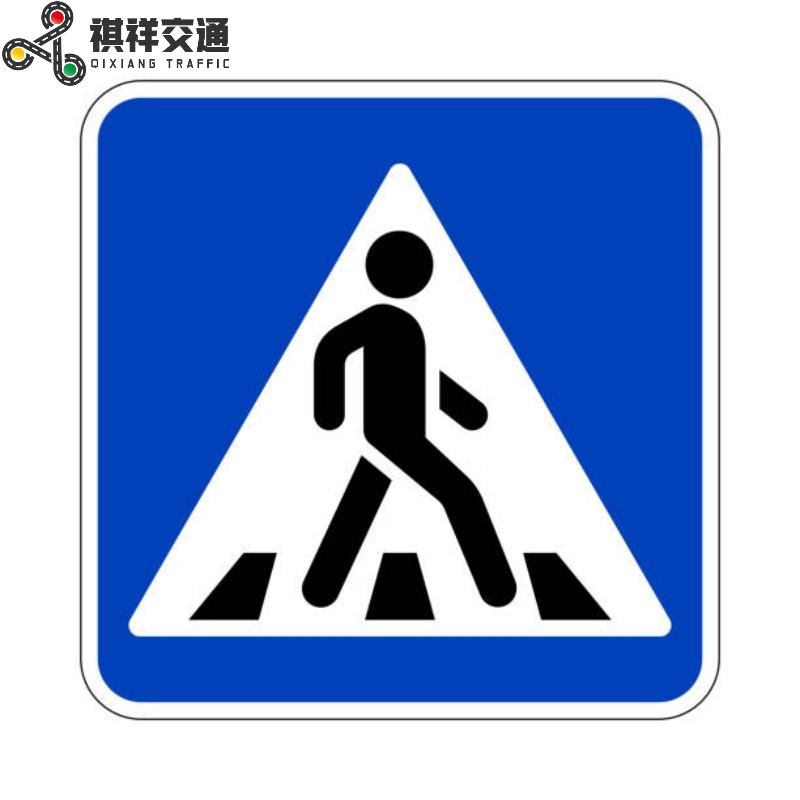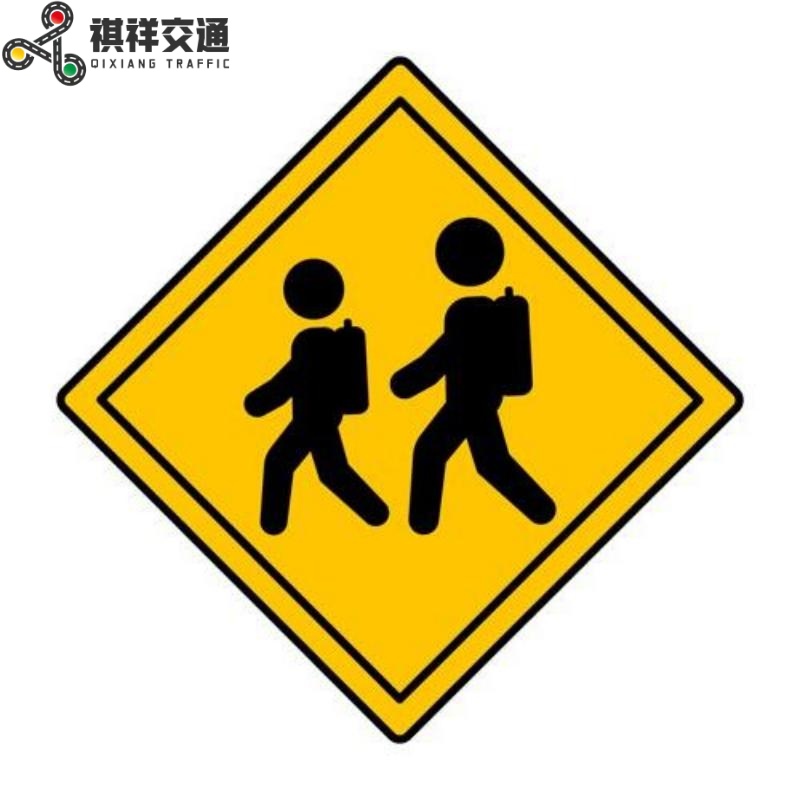In urban planning and road safety, road sign plays a vital role in ensuring pedestrian safety, especially in areas with high foot traffic. Of the various signs that guide drivers and pedestrians, pedestrian crossing signs and school crossing signs are two of the most important. While they may seem similar at first glance, they serve different purposes and are designed to address different safety issues. This article will explore the differences between these two important signs, what they mean, and the impact they have on road safety.
Pedestrian Crossing Sign
A pedestrian crossing sign is a universally recognized symbol used to indicate a designated area where pedestrians can safely cross the street. The sign is usually a blue square or rectangle with a white pedestrian image on it and is placed at intersections or in the middle of a block where pedestrian traffic is expected. The main purpose of a pedestrian crossing sign is to alert drivers to the presence of pedestrians and encourage them to give way.
Crosswalks are often equipped with additional features such as flashing lights, road markings, and sometimes even traffic lights. These improvements are designed to increase visibility and ensure that drivers and pedestrians are aware of the crossing point. In many jurisdictions, vehicles are required by law to stop for pedestrians at marked crossings, so these signs are essential for pedestrian safety.
School Crossing Sign
In contrast, a school crossing sign is designed specifically to alert drivers to children crossing the road, especially near schools. This sign is usually diamond-shaped and has a yellow background with a black outline of two children walking. School crossing signs are often accompanied by other signs indicating when the sign is effective, usually during the school arrival and dismissal periods.
The main purpose of school crossing signs is to improve the safety of children, who may not always pay attention to their surroundings or traffic rules. These signs are strategically placed near schools, playgrounds, and other areas where children may be present. In many cases, school crossing signs are used in conjunction with crossing guards, who help manage traffic and ensure that children are able to cross the street safely.
Main Differences
While both crosswalk signs and school crosswalk signs are intended to protect pedestrians, their main differences lie in their specific emphasis and design:
1. Target Audience:
Pedestrian crossing signs are intended for all pedestrians, including adults, seniors, and children. In contrast, school crossing signs are specifically targeted at children and alert drivers to the increased likelihood of young pedestrians in the area.
2. Design and Color:
Pedestrian crossing signs typically feature a blue background with a white pedestrian symbol, while school crossing signs feature a yellow background with a black silhouette of a child. This design difference helps drivers quickly identify the type of crosswalk they are approaching.
3. Location and Environment:
Pedestrian crossing signs can be found in a variety of locations, including urban areas, shopping districts, and residential areas. However, school crossing signs are specifically placed near schools and in areas frequented by children, such as parks and playgrounds.
4. Legal Implications:
The legal requirements for yielding to pedestrians at intersections may vary depending on the type of sign. In many jurisdictions, vehicles must stop and yield to pedestrians at marked intersections, while school crossing signs may have additional regulations requiring drivers to slow down and be extra vigilant when school is in session.
Importance of two signs
Pedestrian crossing signs and school crossing signs both play a vital role in promoting road safety. Pedestrian crossing signs help create a safer environment for all pedestrians, reducing the risk of accidents and injuries. Meanwhile, school crossing signs remind drivers to be extra careful where children are present, fostering a culture of safety around schools.
In recent years, there has been an increased focus on pedestrian safety, and many cities have taken steps to improve the visibility and effectiveness of these signs. These measures include installing high-visibility crosswalks, using flashing lights, and adopting technology such as pedestrian countdown signals. These advances are intended to increase the effectiveness of pedestrian and school crossing signs, ultimately reducing accident rates and ensuring the safety of vulnerable road users.
In conclusion
In summary, while pedestrian crossing signs and school crossing signs look similar, they serve different purposes and are designed to address different safety issues. Understanding the differences between these two signs is vital for both drivers and pedestrians as it can increase awareness and encourage safe behavior on the road. As urban areas continue to grow and evolve, the importance of effective signage will continue to be an important part of road safety, ensuring that all pedestrians, especially children, can navigate their environment safely.
Qixiang is a famous road signs manufacturer in China and we can customize any sign you want. Welcome to contact us for a quote!
Post time: Nov-19-2024








